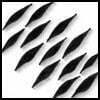 Spanish tangler Tomàs Padrós joins us this fine Monday to share his Fontana tangle with us. Wait until you see what he does with this “extruded mesh” design.
Spanish tangler Tomàs Padrós joins us this fine Monday to share his Fontana tangle with us. Wait until you see what he does with this “extruded mesh” design.
Tomàs has several very popular tangles on the site, Fontana is his tenth.
He introduces us to Fontana and the source of his inspiration,
“The basic pattern can not be more minimalist. A succession of lines that can be given a certain thickness, more or less opened.
My source of inspiration was the work of Argentine-Italian artist Lucio Fontana, founder of spatialism and known for his slashed and perforated surfaces.
Of course I have also been inspired by any simple cut, such as incisions, scratches, Renaissance clothes, extruded metal meshes, cut paper, fish gills, etc.
Despite its minimalism, it is possible to complicate the design if we use it to suggest an extruded mesh, a design in which the echoes of the delicious Maisie tangle resonate.
It is possible to open more or less the cuts generating different formal solutions or interesting progressions.”
Check out the link to the Guggenheim above for Lucio Fontana’s biography (February 1899 – September 1968) and examples of his art. You can also learn more about him here on Wikipedia. Fascinating and “out there” character.
As you’ll see in Tomàs’s examples, Fontana is an interesting tangle for experimentation. I went for a straightforward version using his example on the bottom right of the first steps below and his Renaissance tile. I found the biggest challenge was to get the “slashes” spaced in the symmetrical way I was going for. So I first laid down the center “row” of strokes by placing the “outside” or end ones first and another midway between those two. Then it was easy to add the other strokes centering in between. Add a C curve on one side of each slash and a shallow wave on the other side, fill it in, et voilà. With a touch of shading.
Tomàs illustrates the first set of step-by-step instructions for drawing Fontana below explaining, “In the first I show a basic deconstruction with a good number of possibilities and variations. One of them shows an extrusion mesh in its simplest almost closed appearance.”
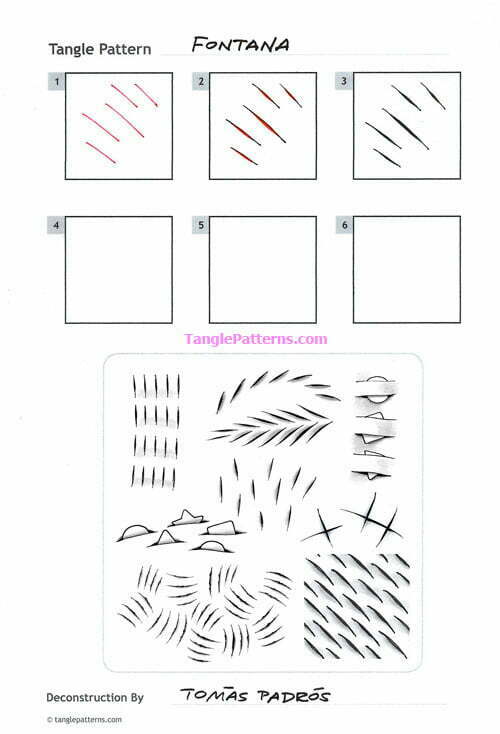
Image copyright the artist and used with permission, ALL RIGHTS RESERVED. Please feel free to refer to the steps images to recreate this tangle in your personal Zentangles and ZIAs, or to link back to this page. However the artist and TanglePatterns.com reserve all rights to these images and they must not be publicly pinned, altered, reproduced or republished. They are for your personal offline reference only. Thank you for respecting these rights. Click the image for an article explaining what copyright means in plain English. “Always let your conscience be your guide.” ~ Jiminy Cricket
With his second set of steps and examples below Tomàs writes,
I display a dynamic arrangement full of cuts that sometimes combine in the form of extrusion mesh but that are also perceived as cuts or gills.
When we submit an extrusion mesh to tensile forces, the holes open. It is here when the design can remind us of a kind of minimal Maisie, although devoid of any decorative element.
Tomàs’s intriguing monotangle on a Renaissance tile example of this version:
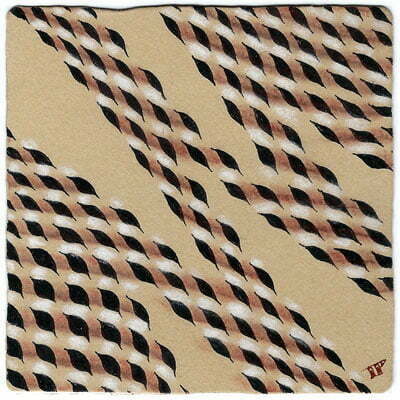
A second example tile demonstrating the “extruded mesh” potential of Fontana “with different formal solutions of the same pattern“. Lovely sense of movement on this tile.
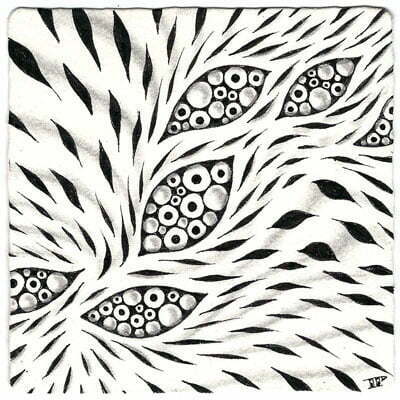
Here are the steps for this variation, aka the Maisie version.
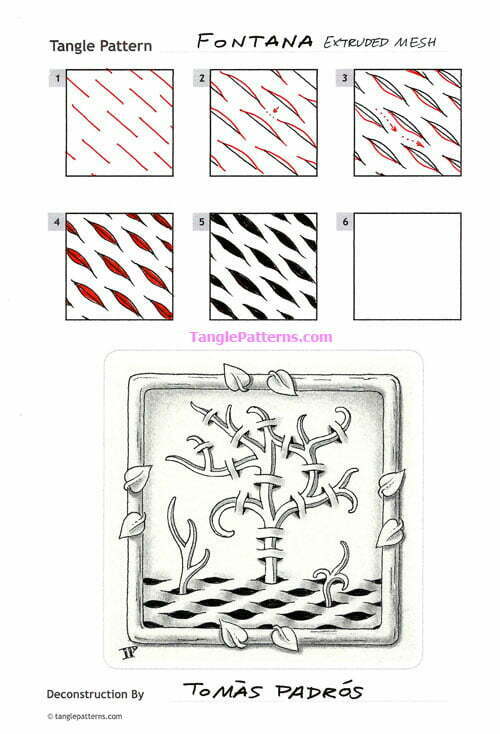
Image copyright the artist and used with permission, ALL RIGHTS RESERVED. Please feel free to refer to the steps images to recreate this tangle in your personal Zentangles and ZIAs, or to link back to this page. However the artist and TanglePatterns.com reserve all rights to these images and they must not be publicly pinned, altered, reproduced or republished. They are for your personal offline reference only. Thank you for respecting these rights. Click the image for an article explaining what copyright means in plain English. “Always let your conscience be your guide.” ~ Jiminy Cricket
As you enjoy any of the tangles on the site, please leave a comment of thanks and encouragement to show the artists you appreciate them for sharing their creativity to inspire yours. Your thanks helps motivate them to continue to share!
Check out the tag tomasp for more of Tomàs’s tangles on TanglePatterns.com.
.oOo.
Share your tangle on TanglePatterns
Everyone is invited to share patterns on TanglePatterns.com, you do NOT need to be a CZT. In order for patterns to be considered for publication they must be submitted to me by email. In other words you have to let me know about them.
For a submission to qualify as a tangle it must be a genuine pattern (“a regularly repeated arrangement, especially a design made from repeated lines, shapes, or colours on a surface”) and not the repetition of “a thing to draw”.
From The Book of Zentangle:
“Keep it Non-representational. Zentangle artwork is intended to be non-representational. Zentangle’s elemental strokes are also non-representational.
We don’t teach complex elements such as hearts, stars or flowers. Tangles are also non-representational.”
Remember that tangles never start with pencil planning.
"A tangle has no pre-planning with pencil guidelines, grids or dots, no erased lines."
If you need a refresher on what makes a tangle, read the A PATTERN IS NOT ALWAYS A TANGLE page on the ZENTANGLES menu bar at the top of any page.
For details on how to submit your pattern for consideration visit the SUBMIT YOUR PATTERN page on the top menu bar of any page on the site. On that menu you will find these two pages:
The first page includes instructions on how to prepare and send your JPGs. (Please save me time and do not send PDFs.) It also includes a link to this PDF submission form.
When your examples include additional tangles from the site, please list them in your email. (This saves me time and my memory some wear and tear.)
If your pattern is posted on your blog, attach your steps and tile JPGs to your email and be sure your email includes the direct URL so I can link to it.
And remember, to quote Zentangle's co-founders Rick and Maria: tangles should be "magical, simple and easy to create", non-objective patterns of repetitive strokes that are easy to teach and offer a high degree of success to tanglers of all ages.
"Keep the tangles as little like 'drawing something' as possible."
.oOo.
|
.oOo. |
|
Enhance your Zentangle experience while supporting TanglePatterns: |
|
LATEST EDITION! TanglePatterns.com TANGLE GUIDE, 2025 Edition |
|
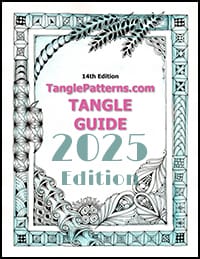 |
The 14th Edition of the TanglePatterns.com TANGLE GUIDE is an instant-download 117-page interactive digital eBook/PDF containing over 2,000 tangles on the site from May 2010 through December 31, 2024. It's a great resource and a must-have digital tool for using the site. Visit the STORE > E-BOOKS page and help keep TanglePatterns.com going by getting your copy now! |
|
"Linda, Thank you! I was relying on too few and getting stuck after 3 years of daily working with Zentangle. This has inspired me to ‘begin again’ with renewed excitement." ~ Barbara R. |
|
| See the BOOK REVIEWS page for more details on its features and view a sample page. Note: this is a digital product you download immediately when you place your order, nothing will be physically mailed to you. | |
| If you're new to Zentangle® and tangling, my TanglePatterns.com BEGINNER'S GUIDE TO ZENTANGLE is just what you need to get started. Also available en Français and en Español. | |
|
|
|
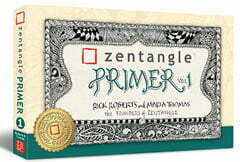 |
This is the only Zentangle book you'll ever need: the fabulous Zentangle PRIMER Vol 1. It's your CZT-in-a-book by the founders of Zentangle®. Visit the STORE tab on the top menu bar or click on the image. For more about the content and to read the rave reviews, visit the BOOK REVIEWS tab. |
| Now available in KINDLE format for $9.99. Spanish Edition here. Japanese Edition here. | |
| "Absolutely the best Zentangle Book yet! As an accomplished artist I used to think I did not need instruction on this art form. How wrong I was! My tangling improved by leaps and bounds after reading this book. If you think you have Zentangle down then you need this book more than ever!" ~ Kris H | |
|
|
|
|
.oOo. |
|

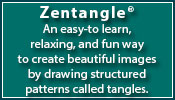
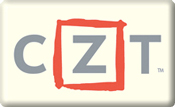

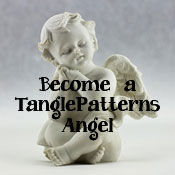
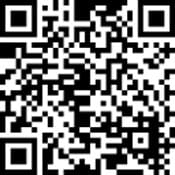
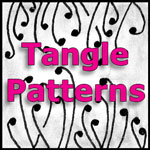
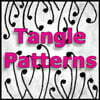
Congratulations Tomas! You have an amazing collection of patterns and I am a fan of each of them. As simple as this appears to be, it has so many possibilities and a big impact on your tiles.
Thank you so much for your detailed descriptions and beautiful examples.
I agree with Jody, it is a lovely tangle and you know, I have already used it!
Very interesting, different and lovely pattern. Thanks for sharing.
How beautiful this is! It is not only simple, but so versatile, too. I will use it often. Thanks, Linda, for presenting Tomas’ elegant tangle!
This is just inspiring Tomas! Thank you so much for breaking down the steps. can’t wait to try it.
I really like this pattern like paper cutting.
I will ditto that! Meeting with a few friends to tangle today will share it with them. Thank you!
Inspiring—thank you
Great tangle. I love the monotangle on the Renaissance tile. Thanks Tomas.
Thank you Linda for your presentation of this tangle and for your magnificent and elegant version. Thank you, Jody and congratulations for your beautiful last tangle here, Anthem. Hi, Ria. I have a screenshot of your fascinating Fontana tree. Thank you all for your support. I hope you enjoy with all this. An advice: This tangle semms easy but it gets a bit complicated in its extruded mesh mode. Don’t worry. You have to go to the simplest and then suddenly the tangle begins to obey.
Tomas – You never fail to deliver a beautiful tangle! I love, love the tree. I am challenged with the extruded mesh but that it what all my scratch paper is for. I will get the hang of it. Thank you so much.
Thank you, Linda, for introducing us to Tomas. I appreciate you and all your efforts in running your website with it’s fountain of learning and enjoyment.
Hi Tomas: It is so lovely. I love it a lot. Thank you for sharing.
This guy is good
AmaZing. Tomas, you always inspire us and wow us with your work!!